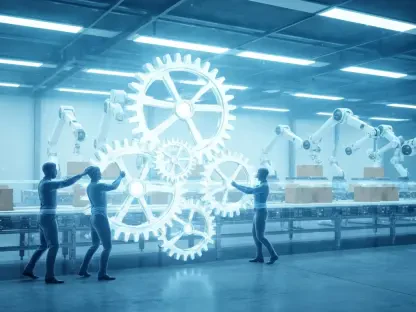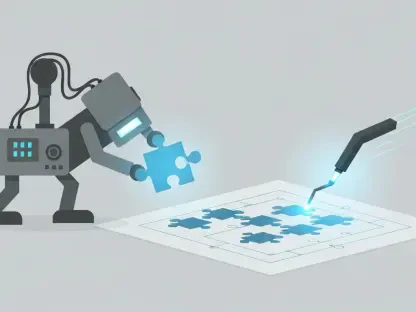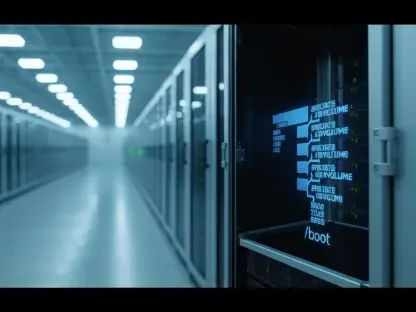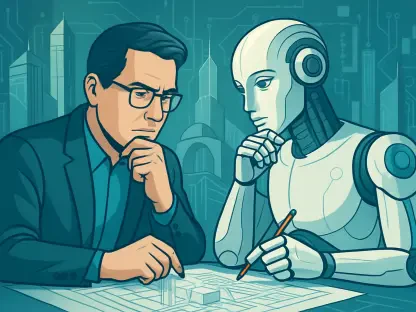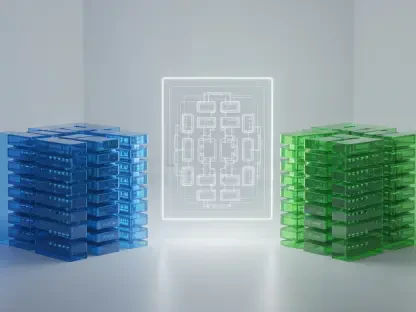Modernizing legacy systems and applications is an urgent yet challenging endeavor for many enterprises, especially those relying on outdated software. With rapid technological advancements, simplifying application migration has become a priority, prompting the question: can generative AI transform this complex process? As businesses seek to stay competitive and efficient, the integration of AI-driven tools offers promising solutions to the intricate tasks involved in application migration and modernization.
Understanding the Importance of Application Migration
The majority of software used by major companies today was developed over two decades ago. Aging systems often come with technical debt, security vulnerabilities, and inefficiencies that can hamper an organization’s performance and growth. These outdated systems require substantial resources to maintain while limiting the ability to adapt to new business requirements or leverage modern technologies.
Application migration involves moving these legacy systems to modern platforms, enhancing overall functionality, and meeting current business needs. However, given the intricate nature of old technologies, migration is typically risky and expensive. Legacy systems were often built using programming languages and frameworks that have since become obsolete, leading to compatibility issues and a lack of documentation.
Successfully migrating these systems requires careful planning, meticulous testing, and thorough understanding of the existing applications. The inherent complexity and potential disruptions often discourage businesses from undertaking migration projects, despite the recognized benefits of modernization. This is where generative AI tools can come into play, offering innovative solutions to streamline and simplify the migration process.
Generative AI: A Revolutionary Tool
Emerging as a game-changer, generative AI tools are presenting innovative solutions to streamline the migration process. From planning to execution, AI-driven approaches hold the potential to reduce costs, minimize risks, and accelerate timelines. By leveraging the capabilities of generative AI, organizations can automate many aspects of migration, optimizing both accuracy and efficiency.
Generative AI can assist in various stages, including code analysis, translation, testing, and data migration, offering unprecedented productivity and effectiveness for developers and IT teams. These tools employ machine learning algorithms to analyze vast amounts of code and data, helping to identify patterns, dependencies, and potential issues.
By automating repetitive and time-consuming tasks, generative AI enables developers to focus on more strategic aspects of migration, such as architectural redesign and user experience improvements. This increased productivity not only accelerates the migration process but also enhances the overall quality of the modernized application, ensuring it meets current business needs and future growth opportunities.
Workflow and Requirements Analysis
A successful migration begins with a thorough understanding of existing systems. This includes identifying workflows, data requirements, and business purposes. Generative AI can enhance the preparation phase by aiding product owners and business analysts in writing requirements and agile user stories. These AI tools can analyze current workflows and data usage, providing insights that help define clear and comprehensive migration requirements.
By utilizing AI tools, stakeholders can better manage change programs, ensuring all essential aspects of the application are accounted for before diving into the migration process. The automation of requirements gathering and documentation can significantly reduce the time and effort involved, leading to more accurate and detailed preparation.
Generative AI also supports the discovery of unknown areas within the legacy system, identifying gaps or opportunities for improvement that may not be immediately apparent. This comprehensive analysis ensures that the migration plan addresses all critical elements, reducing the risk of overlooking important functionalities or data dependencies that could impact the success of the migration.
Dependency Analysis and Architectural Review
Legacy applications often depend on various APIs, third-party data sources, and data pipelines. Performing a detailed architectural analysis is crucial to outline these dependencies and evaluate the risks involved. Understanding the intricate web of dependencies within a legacy system is essential for devising a robust migration strategy.
Generative AI can expedite this time-consuming task, offering quick insights and suggesting architectural adjustments that balance risk and availability constraints. AI tools can analyze the existing architecture, identifying dependencies and potential bottlenecks, and propose optimized configurations for the modernized application. This efficiency boost is invaluable in reducing complexity and optimizing migration strategies.
By leveraging generative AI, organizations can ensure a smoother transition to new platforms, minimizing interruptions to business operations and enhancing overall system performance. The automated analysis not only speeds up the architectural review process but also provides a level of detail and accuracy that may be difficult to achieve manually.
Insights into Legacy Code
For developers, reviewing archaic legacy code is often daunting. Generative AI tools like OpenAI Codex and GitHub Copilot can simplify code analysis by providing explanations, extracting business rules, and diagramming function call sequences. These AI-driven tools can analyze large codebases, identify patterns, and offer insights into the underlying logic and structure of the code.
By translating and unlocking complex codebase intricacies, AI tools assist developers in comprehending and managing legacy code effectively, even when documentation is limited. This improved understanding enables developers to identify areas that require refactoring or optimization, ensuring that the modernized application is both efficient and maintainable.
Generative AI’s ability to provide real-time assistance and context-aware suggestions can significantly reduce the time and effort required for code analysis. It allows developers to quickly grasp the functionality of legacy code and make informed decisions about how to best migrate and modernize it.
Automated Code Translation
Translating parts of legacy applications into new languages is a critical aspect of modernization. Generative AI tools enable automated code translation, reducing manual efforts and minimizing human errors. These tools can analyze the existing code, identify language-specific constructs, and generate equivalent code in the target language.
Tools such as Java Language Conversion Assistant (JLCA) and CodeConvert facilitate seamless language transitions, allowing developers to port applications to newer technologies without compromising performance or quality. The automated translation process ensures that the generated code adheres to best practices and modern coding standards, enhancing the maintainability and scalability of the application.
By automating code translation, generative AI reduces the risk of introducing errors during the migration process and accelerates the overall timeline. This enables organizations to quickly take advantage of new technologies and platforms, improving their ability to innovate and respond to changing market demands.
Comprehensive Testing and Quality Assurance
Testing remains one of the most challenging aspects of application migration. Legacy systems often lack automated unit tests and regression tests, essential for ensuring functional parity post-migration. Without comprehensive testing, there is a risk of introducing bugs or inconsistencies that could impact the performance and reliability of the modernized application.
Generative AI can generate robust test suites, matching legacy and new components. This helps maintain consistent behavior and functionality, improving quality assurance and building trust in the migrated application. AI-driven testing tools can automatically create test cases based on the existing code and data, ensuring that all critical paths and edge cases are covered.
By automating the testing process, generative AI reduces the time and effort required to validate the migration, enabling faster delivery of high-quality software. The ability to quickly identify and address issues during the migration process ensures that the final application meets business requirements and user expectations.
Efficient Data Migration Planning
Data migration usually involves schema changes and data quality fixes, making it a complex and meticulous process. Generative AI can aid in planning and executing data migrations, automating repetitive tasks and reducing risks of data loss or corruption. These AI tools can analyze existing data structures, identify inconsistencies, and propose optimal strategies for data transformation and migration.
For large-scale databases or high-velocity transactions, incremental migrations supported by AI-driven automation can streamline the process, ensuring smooth, efficient transitions. By leveraging generative AI, organizations can minimize disruptions to business operations and ensure that all critical data is accurately and securely transferred to the new platform.
Automating data migration planning and execution not only reduces the risk of errors but also accelerates the overall process, enabling organizations to quickly realize the benefits of modernization. This improved efficiency can have a significant impact on the overall success and ROI of the migration project.
Managing Risks of AI-Generated Code
Despite the power of generative AI in code generation, development teams must be vigilant about potential risks. Detailed code and security reviews are paramount to ensure compliance and safeguard against threats like prompt injection. AI-generated code, while highly efficient, can introduce vulnerabilities if not properly vetted and tested.
Automated security controls and thorough testing programs can mitigate these risks, ensuring the integrity and safety of AI-generated code in production environments. It is crucial for development teams to implement rigorous security protocols and continuously monitor the generated code for potential issues.
While generative AI can significantly enhance the efficiency and accuracy of application migration, it is essential to maintain a balance between automation and human oversight. Combining the strengths of AI with the expertise of skilled developers ensures that the final application is both secure and reliable.
Conclusion
Modernizing legacy systems and applications is a pressing yet complex challenge for many businesses, especially those dependent on outdated software. As technology evolves at a breakneck pace, the necessity to streamline application migration has become a high priority for enterprises. This substantial task begs the question: can generative AI revolutionize and simplify this intricate process? As companies strive to remain competitive and enhance operational efficiency, the adoption of AI-powered tools shows great promise in tackling the multifaceted nature of application migration and modernization.
Enterprises grappling with outdated infrastructure can benefit significantly from AI’s ability to analyze and adapt existing systems more efficiently. These AI-driven tools can identify optimal modernization paths, predict potential issues, and provide automated solutions, significantly reducing manual effort and human error. Moreover, AI can help in maintaining business continuity during the transition, ensuring that critical operations aren’t disrupted.
Incorporating generative AI into the migration process not only speeds up the overhaul but also ensures that the new systems are robust, scalable, and future-proof. By leveraging AI, businesses can transform their legacy systems into modern applications that align with current technological standards, thereby gaining a competitive edge. Thus, the integration of AI-driven solutions stands to revolutionize how enterprises approach the modernization of their software infrastructure.


